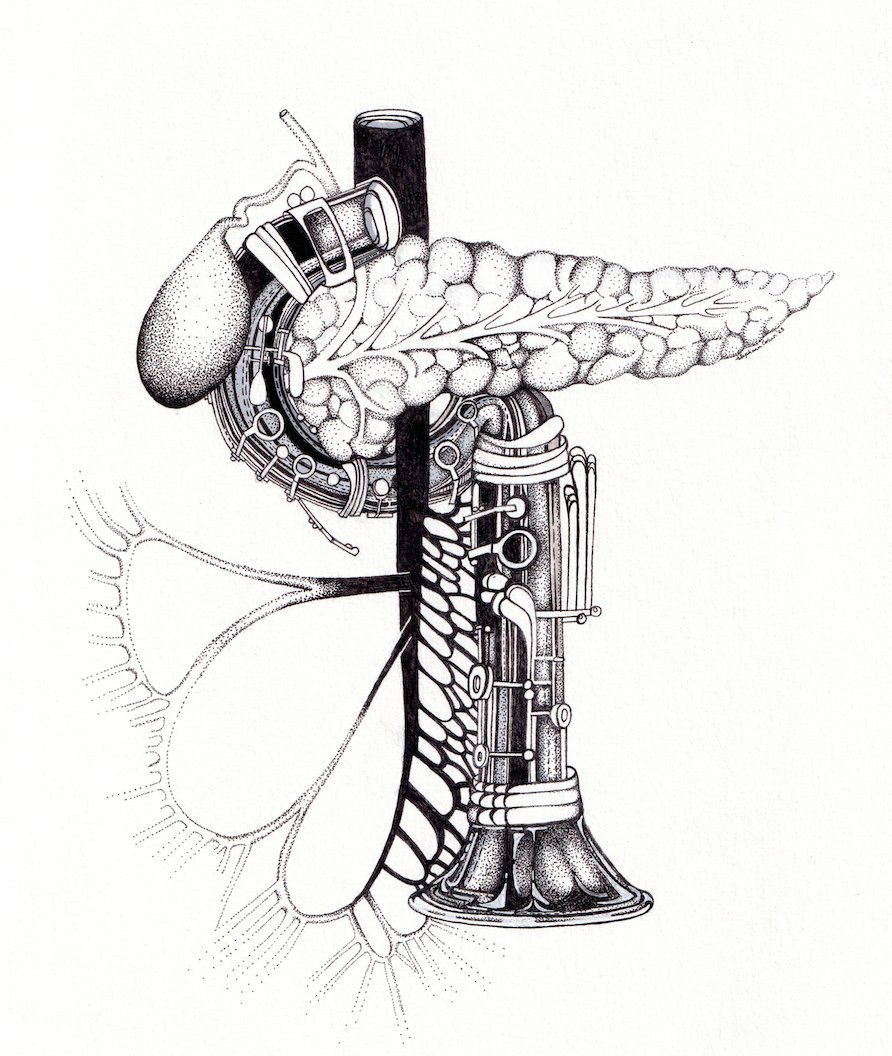The surgeon enters the room, spinning with the circulator, as if performing a ritualistic dance as they fluidly don that uniformly blue sterile costume just in time for the opening performance of the day. A scalpel caressed in hand, like a calligraphy pen, as the first incision -or be it brush stroke- is made. All movements are both gracefully calculated and responsive--simultaneously planned and reactive. The systemic application of the acquired knowledge, which often becomes nearly innate, is seen in each operative step whilst synchronized with respectful awareness of unique anatomy and tissue planes. The surgery coalesces in the orchestrated harmony of the team – the surgeons, trainees, scrub techs, and circulating nurses. Where communication mishaps mimic symphonic dissonance; the violins screech, or the saxophones fall flat.
Surgery is clearly far from just a science or profession; it is an art. And it is no coincidence that Harvey Cushing and Theodore Billroth were prodigious artists and musicians whilst holding crowns in the shining stars of surgical history. It would be dismissive to say that the artistic nature of surgery is purely technical---as art itself is enticingly cerebral. While both medicine and art involve, and require, systematic data collection and interpretation, problem solving in these arenas also invoke formulation of unique plans based off personal experience and creativity. A smorgasbord unique to each individual surgeon or artist. No two operations can ever be identical just as no two paintings will ever be impeccably mirrored. The incorporation of medical students and residents serves to further these customized moments as physicians must teach whilst planning operative approaches and communicating true consent to patients.
At the end of high school, I began my foray into medically inspired artwork. Always surrounded by classical music with family member violinists and pianists, I found it quite familiar and soothing to draw musical instruments. When I first learned about the physiology of cancer during high school biology, cancer cells were described as “insensitive to their environment,” and “replicating out of control.” My imagination swirled with images of a rogue violinist breaking free from the coordinated symphony and becoming unresponsive to the conductor—musical chaos and dissonance ensuing! This inspired me to draw a series of images incorporating human anatomy within the inorganic shells of musical instruments, and this was my first time drawing the human body.
At first, my anatomical knowledge was rudimentary and the medium that I was comfortable with was colored pencil due to a lack of exposure. Just as knowledge and instrument preference mature in surgical training and growth, my art preferences propagated as I studied art formally as an undergraduate and after four years of medical school. Yet I revisited the same theme with fresh but more experienced eyes – how do I amalgamate or anastomose these themes of music, art, and anatomy in a body of artwork?

Remembering that nothing, including my eager and frenzied hands, were static, I realized it was permissible to revisit concepts and themes, in essence enriching my own work with new perspective. I again, produced drawings that combined art and music—and, after medical training, the anatomy’s accuracy shined much brighter to my now qualified eyes. Simultaneously, I gained experience working with different mediums and found my preference and strength lay in ink.
The conceptual nature of my work did grow. I also began to incorporate eponyms into my artwork which too became more thoughtful as time went on. One of the first that I created featured an anatomical heart composed of cabbage leaves entitled “CABG,” a readily apparent visual pun. More recently, I have created works such as “strawberry gallbladder,” the eponym for gallbladder cholesterolosis and a large mouth bass swimming up to the duodenum to illustrate the “fishmouth ampulla” associated with intraductal papillary mucinous neoplasms. I found my artistic foundation; I now artwork that I create for personal introspection, humor, and wellness, as well as for manuscript diagrams, for patient communication and consent.
While we can’t always see our own growth as physicians, I have been fortunate that art has given me a tangible path that I can reflect back on to see both my artistic and medical evolution. It forces me to pace my thoughts and be at peace with whatever takes shape as I begin to create ink lines on the white abyss of my Bristol board. If the work does not turn out how I envisioned it, it can be frustrating, but it is no mistake. While many parallels exist between art and medicine in terms transforming objective data to execute plans, in art, there is complete freedom without repercussion onto anyone else –which offers absolute freedom to experiment and to err.
For more about Dr Baimas-George, read about her and the Strength of My Scars initiative, click here and follow her on Twitter: @Mbaimasgeorge
Check out Dr Cohen's art on her website here and follow her on Twitter: @StephCohenMD
In this latest blog, Drs. Steph Cohen and Maria Baimas-George write about their arts: surgery and illustration